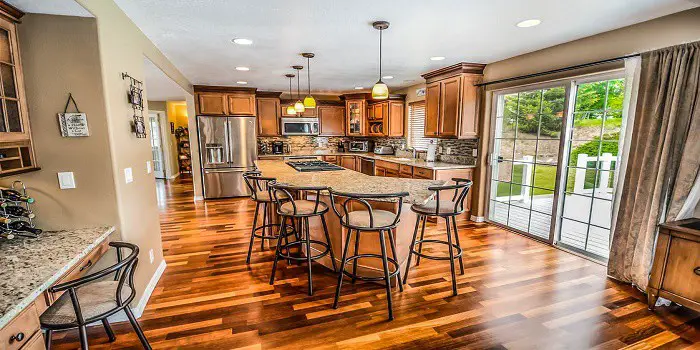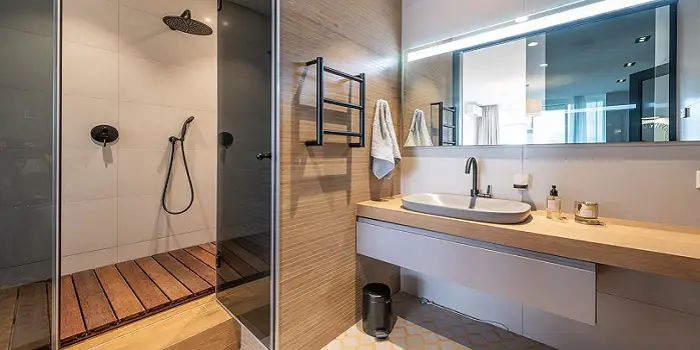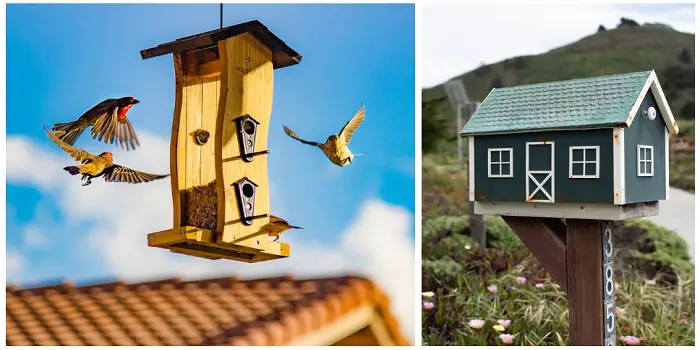
When you’ve finished a day’s work or are taking a break from being inside and come out to your balcony or yard—whatever applies—the chirping and skipping of birds can be most delightful and relaxing.
But urban cities, with their scarce trees and plenty of noise pollution, aren’t exactly a welcoming home to our feathered friends.
So why not build your chirpy friends a home they can always stop by whenever they’re around?
Best Wood for Birdhouse
Yes, we’re talking about building a birdhouse.
Birds live in trees, so it makes sense that the house you build for them is made of wood. Here are some options.
1- Cedar Wood
Birdhouses have to be outdoors. Therefore, whatever wood is used to build them has got to be sturdy and resilient even in changing weather.
Native to the western Himalayas and Mediterranean, wood from the cedar trees is resistant to rotting and damaging conditions such as direct exposure to sun and weather.
Plus, cedarwood has a natural pink blush to it, which is simply charming.
Though it’s a bit pricey, considering how robust the birdhouse will be, it’s a nice long-term investment.
2- Redwood
As its name suggests, this material has a deep blush of red-brown when it’s polished, which will give your birdhouse the warm but sturdy-feeling we all look for in wooden builds.
Being from a Sequoioideae family that can live for thousands of years, this wood is very resilient in the face of natural hardship.
The potential downside is that although it doesn’t get destroyed easily, it does scratch easily.
But when it comes to outdoor woodwork, sometimes a little rugged look is all the more attractive.
3- Pinewood
This wood with a pale modern look is one of the most common, thus cost-effective, materials in the US, making it an excellent choice if you’re budgeting on your birdhouse.
Because of its soft texture, this wood is easier to work with compared with other options.
However, pinewood is not as resilient to the outdoors as the previous two options, so if you’re using this for your birdhouse, you might want to consider applying a sealant as protection.
4- Cypress
One of the enemies of wooden materials is humidity.
But cypress has a natural water-repellent property which makes it one of the most weather-resilient woods out there.
Although it could be affected severely by chemicals in the soil, luckily, birdhouses don’t sit in soil.
The cypress is very sturdy, easy to work with, and is often used in heavy construction because of its robustness.
However, this wood can be hard to find in certain areas in the US, because the cypress tree mainly grows in the southern regions.
For its various resistances, this wood doesn’t really require finishing protection, but as with all wooden projects, adding one will prolong its longevity.
5- Teakwood
One of the high-end wooden materials, teak can be a bit expensive. But for very good reasons.
Teakwood has high contents of natural oils, making it resistant to a variety of weathers and rotting and insects.
It also has very strong fibers that are tightly knit together, making it appear very smooth but extremely sturdy.
So it’s not hard to imagine, it lasts years without too much maintenance.
Teakwood, therefore, makes an excellent choice for a permanent home for the birdies.
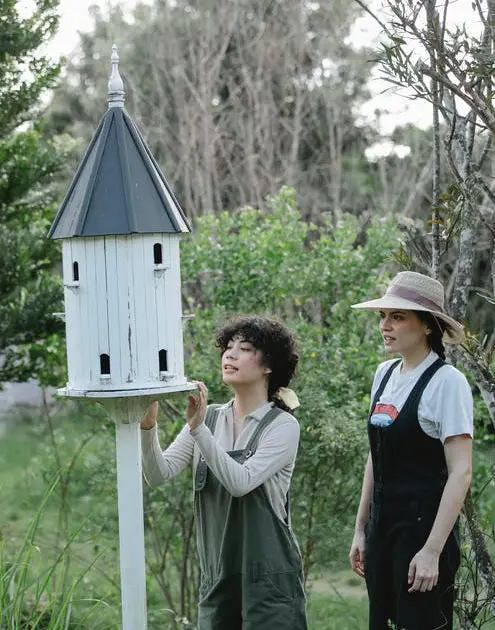
DIY Tips for Building a Wooden Birdhouse
The structure of the birdhouse can be as simple or complex as you desire, and it’s quite straightforward to design and execute.
But there are some special aspects of a birdhouse you might want to consider.
Location of your birdhouse
The first thing to consider is height. Make sure it’s high enough so the birds will feel comfortable but not so high that it’s impossible for you to maintain it properly, regularly.
The second thing to consider is the distance from other birdhouses around.
Birds can get territorial, so keeping them farther apart can prevent unnecessary conflicts and injuries, even deaths.
Fasteners need sealing
By sealing, we are talking about coating your screws and fasteners.
Because the birdhouses will be exposed to natural conditions, metal pieces need protection from what wood might be able to stand, especially if you used one of the more robust woods.
This step is important, because if left untreated, the joints of your birdhouse may be loosened over time.
Protect the entrance with a roofing eave
Just like the eaves of our own houses provide a shelter above our doors, the birds need a roof over their entrance to the birdhouse.
First, it protects against any rains or snow getting inside and makes the birds’ home uncomfortable. Second, it provides a blocking against any aerial predators.
Don’t seal the roof, use a hinge to secure it
The reason for doing this is simple: Birds can get messy.
The birdhouse will require some periodic maintenance and cleaning on the inside, and your hands probably can’t fit through the door to the birdhouse.
Drainage
Moisture condenses, and rains can still seep inside. To prevent flooding, add a small hole as drainage that’s safe enough for a bird not to fall through.
Ventilation
Yes, you have a door, but like our own houses, birds need their windows for circulation and to reduce insulation, which is important on the hotter days of the year.
So, do not forget to build at least one window for them.
Perches?
Birds don’t really need perches to enter the birdhouse.
However, if your place isn’t around trees and your birdhouse won’t be near one, then installing a perch can encourage birds to visit more often and even stay longer, as they sometimes will make nests in houses with perch outside.
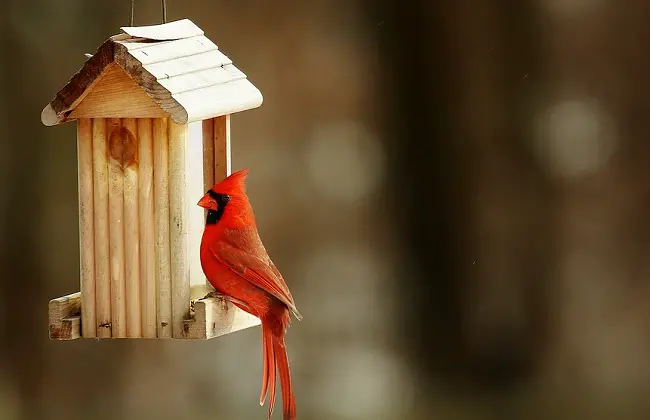
Paint the Birdhouse With Mindful Considerations
Colors can attract birds, but make sure you use paints with natural ingredients that are toxin-free.
One thing to start with when picking the paint is to look for water-based ones instead of lead-based.
Also, pick your colors carefully.
Depending on where you’re located, dark colors, for example, can make summers unbearable for the birds because they absorb too much heat.
Do not paint the inside of the birdhouse—the birds might peck the wood and paint is not good for the body.
It is critical to ensure the paint is dried and its often toxic scent is gone completely before putting it up for the birds.
Lastly, try to make your birdhouse match its environment by painting the right colors.
So, try avoiding paints that give unnatural shine—keep it plain and simple to avoid blinding their eyes and attracting unwanted attention from some predators.
As long as you keep the health of these visiting birds in mind and make it a priority, paints can keep your birdhouse in good condition for longer, regardless of the wood you use (though some might need a paint coating more than others), as well as attracting birds to visit and stay.
Final Thoughts
There you go, now you know what factors to consider when building a birdhouse.
It might seem a lot to remember, but birds are sensitive animals and if you’re building them a home, it’s better to make it so that the home is something that will improve the birdie’s lives.
So, if you’re looking for some woodworking projects and happen to enjoy a little skipping and chirping of your feathered friends, build a birdhouse!
You’ll get to enjoy the process, and you’ll enjoy even more the happy chirping of birdies having a good time at the home you built for them.
Share the post "5 Types of Wood for Building Birdhouse (With Painting Tips)"

Hi, I am Mark Garner a professional carpenter, woodworker, and DIY painter. I live in the small city of Peoria, Arizona as a semi-retired woodworker. I have started this blog with a simple motive to help you with my wood experience in this sector. If you like to know more about what I love doing and how it all got started, you can check more about me here.


